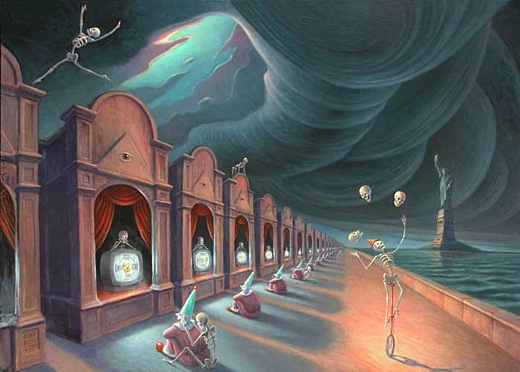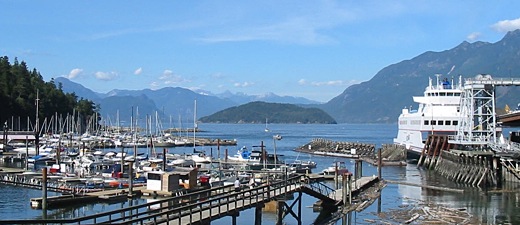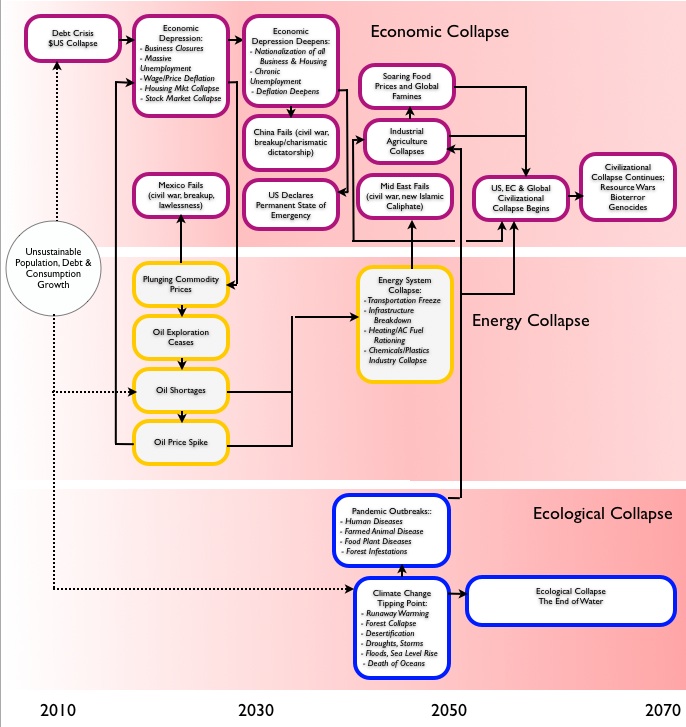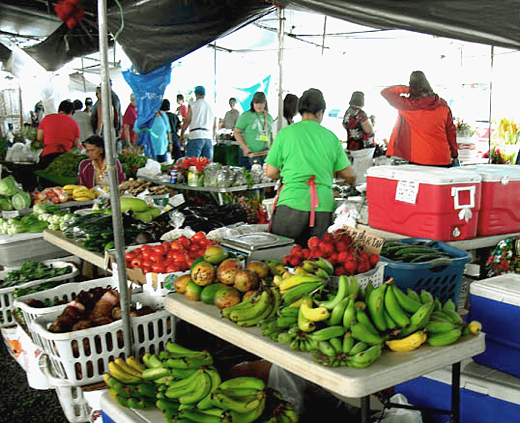 By Nicolai Ourossoff on 25 September 2010 for the New York Times -
By Nicolai Ourossoff on 25 September 2010 for the New York Times - (http://www.nytimes.com/2010/09/26/arts/design/26masdar.html)

Image above: The "upper deck" of the city of Masdar suspended over the desert. Terracotta colored building is a residence building. Photo by Duncan Chard for NYT article.
Back in 2007, when the government here announced its plan for “the world’s first zero-carbon city” on the outskirts of Abu Dhabi, many Westerners dismissed it as a gimmick — a faddish follow-up to neighboring Dubai’s half-mile-high tower in the desert and archipelago of man-made islands in the shape of palm trees. Designed by Foster & Partners, a firm known for feats of technological wizardry, the city, called Masdar, would be a perfect square, nearly a mile on each side, raised on a 23-foot-high base to capture desert breezes.
Beneath its labyrinth of pedestrian streets, a fleet of driverless electric cars would navigate silently through dimly lit tunnels. The project conjured both a walled medieval fortress and an upgraded version of the Magic Kingdom’s Tomorrowland. Well, those early assessments turned out to be wrong.
By this past week, as people began moving into the first section of the project to be completed — a 3 ½-acre zone surrounding a sustainability-oriented research institute — it was clear that Masdar is something more daring and more noxious. Norman Foster, the firm’s principal partner, has blended high-tech design and ancient construction practices into an intriguing model for a sustainable community, in a country whose oil money allows it to build almost anything, even as pressure grows to prepare for the day the wells run dry.
And he has worked in an alluring social vision, in which local tradition and the drive toward modernization are no longer in conflict — a vision that, at first glance, seems to brim with hope. But his design also reflects the gated-community mentality that has been spreading like a cancer around the globe for decades. Its utopian purity, and its isolation from the life of the real city next door, are grounded in the belief — accepted by most people today, it seems — that the only way to create a truly harmonious community, green or otherwise, is to cut it off from the world at large.
Mr. Foster is the right man for this kind of job. A lifelong tech buff who collaborated with Buckminster Fuller, he talks about architecture in terms of high performance, as if his buildings were sports cars. And to some extent his single-minded focus on the craft of architecture — its technological and material aspects — has been a convenient way of avoiding trickier discussions about its social impact. (It’s hard to imagine Mr. Foster embroiled in the kind of public battles over modern architecture that his former partner, Richard Rogers, has fought with the traditionalist Prince Charles in London.)
Not that Mr. Foster doesn’t have ideals. At Masdar, one aim was to create an alternative to the ugliness and inefficiency of the sort of development — suburban villas slathered in superficial Islamic-style décor, gargantuan air-conditioned malls — that has been eating away the fabric of Middle Eastern cities for decades. He began with a meticulous study of old Arab settlements, including the ancient citadel of Aleppo in Syria and the mud-brick apartment towers of Shibam in Yemen, which date from the 16th century. “The point,” he said in an interview in New York, “was to go back and understand the fundamentals,” how these communities had been made livable in a region where the air can feel as hot as 150 degrees.
Among the findings his office made was that settlements were often built on high ground, not only for defensive reasons but also to take advantage of the stronger winds. Some also used tall, hollow “wind towers” to funnel air down to street level. And the narrowness of the streets — which were almost always at an angle to the sun’s east-west trajectory, to maximize shade — accelerated airflow through the city. With the help of environmental consultants,
Mr. Foster’s team estimated that by combining such approaches, they could make Masdar feel as much as 70 degrees cooler. In so doing, they could more than halve the amount of electricity needed to run the city. Of the power that is used, 90 percent is expected to be solar, and the rest generated by incinerating waste (which produces far less carbon than piling it up in dumps). The city itself will be treated as a kind of continuing experiment, with researchers and engineers regularly analyzing its performance, fine-tuning as they go along.
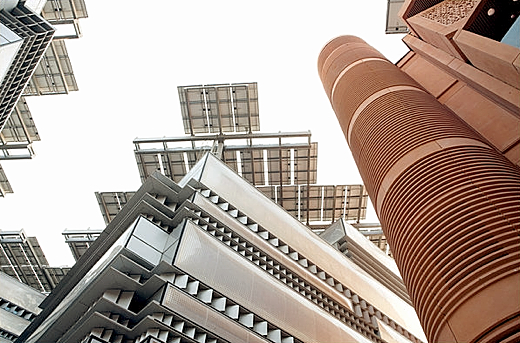
Image above: View within the city looking towards the Masdar Science and Technology Institute. Photo by Duncan Chard for NYT article.
But Mr. Foster’s most radical move was the way he dealt with one of the most vexing urban design challenges of the past century: what to do with the car.
Not only did he close Masdar entirely to combustion-engine vehicles, he buried their replacement — his network of electric cars — underneath the city. Then, to further reinforce the purity of his vision, he located almost all of the heavy-duty service functions — a 54-acre photovoltaic field and incineration and water treatment plants — outside the city. The result, Mr. Foster acknowledged, feels a bit like Disneyland. “Disneyland is attractive because all the service is below ground,” he said. “We do the same here — it is literally a walled city. Traditional cars are stopped at the edges.”
Driving from downtown Abu Dhabi, 20 miles away, you follow a narrow road past an oil refinery and through desolate patches of desert before reaching the blank concrete wall of Masdar and find the city looming overhead. (Mr. Foster plans to camouflage the periphery behind fountains and flora.)
From there a road tunnels through the base to a garage just underneath the city’s edge. Stepping out of this space into one of the “Personal Rapid Transit” stations brings to mind the sets designed by Harry Lange for “2001: A Space Odyssey.” You are in a large, dark hall facing a row of white, pod-shaped cars lined up in rectangular glass bays. (The cars’ design was based on Buckminster Fuller’s proposal for a compact urban vehicle, the D-45, which helps explain their softly contoured, timelessly futuristic silhouettes.) Daylight spills down a rough concrete wall behind them, hinting at the life above.
The first 13 cars of a proposed fleet of hundreds were being tested the day I visited, but as soon as the system is up, within a few weeks, a user will be able to step into a car and choose a destination on an LCD screen. The car will then silently pull into traffic, seeming to drive itself. (There are no cables or rails.)
It’s only as people arrive at their destination that they will become aware of the degree to which everything has been engineered for high-function, low-consumption performance. The station’s elevators have been tucked discreetly out of sight to encourage use of a concrete staircase that corkscrews to the surface. And on reaching the streets — which were pretty breezy the day I visited — the only way to get around is on foot. (This is not only a matter of sustainability; Mr. Foster’s on-site partner, Austin Relton, told me that obesity has become a significant health issue in this part of the Arab world, largely because almost everyone drives to avoid the heat.) The buildings that have gone up so far come in two contrasting styles.
Laboratories devoted to developing new forms of sustainable energy and affiliated with the Massachusetts Institute of Technology are housed in big concrete structures that are clad in pillowlike panels of ethylene-tetrafluoroethylene, a super-strong translucent plastic that has become fashionable in contemporary architecture circles for its sleek look and durability. Inside, big open floor slabs are designed for maximum flexibility.
The residential buildings, which for now will mostly house professors, students and their families, use a more traditional architectural vocabulary. To conform to Middle Eastern standards of privacy, Mr. Foster came up with an undulating facade of concrete latticework based on the mashrabiya screens common in the region. The latticework blocks direct sunlight and screens interiors from view, while the curves make for angled views to the outside, so that apartment dwellers never look directly into the windows of facing buildings. Such concerns are also reflected in the layout of the neighborhood.
Like many Middle Eastern university campuses, it is segregated by sex, with women and families living at one end and single men at the other. Each end has a small public plaza, which acts as its social heart. Still, one wonders, despite the technical brilliance and the sensitivity to local norms, how a project like Masdar can ever attain the richness and texture of a real city.
Eventually, a light-rail system will connect it to Abu Dhabi, and street life will undoubtedly get livelier as the daytime population grows to a projected 90,000. (Although construction on a second, larger phase has already begun, the government-run developer, the Abu Dhabi Future Energy Company, refuses to give a completion date for the city, saying only that it will grow at its own pace.)
But the decision of who gets to live and work in Masdar, as in any large-scale development, will be outside the architect’s control. That will be decided by the landlord, in this case, the government. And even if it were to become a perfect little urban melting pot, Masdar would have only limited relevance to the world most people live in. Mr. Foster’s inspired synthesis of ancient and new technologies could well have applications elsewhere; it should be looked at closely by other architects. But no one would argue that a city of a few million or more can be organized with such precision, and his fantasy world is only possible as a meticulously planned community, built from the ground up and of modest size.
What Masdar really represents, in fact, is the crystallization of another global phenomenon: the growing division of the world into refined, high-end enclaves and vast formless ghettos where issues like sustainability have little immediate relevance.
That’s obviously not how Mr. Foster sees it. He said the city was intended to house a cross-section of society, from students to service workers. “It is not about social exclusion,” he added. And yet Masdar seems like the fulfillment of that idea. Ever since the notion that thoughtful planning could improve the lot of humankind died out, sometime in the 1970s, both the megarich and the educated middle classes have increasingly found solace by walling themselves off inside a variety of mini-utopias.
This has involved not only the proliferation of suburban gated communities, but also the transformation of city centers in places like Paris and New York into playgrounds for tourists and the rich. Masdar is the culmination of this trend: a self-sufficient society, lifted on a pedestal and outside the reach of most of the world’s citizens.
[Editor's note: It appears that the future lies in Masdar, not the nearby Vegas styled tourist trap of Dubai. Dubai may have it's gated speculative communities but they are not sustainable of defensible. If Masdar is the future then it will mark the return of the Moslem citadel (or qala'at - fortress) in Arabia. Like the monk's abbeys in Europe, places like Masdar may be where the flame of knowledge and civilization are maintained.
Unfortunately, the need for such constructs points to a more dangerous and less civilized world with safe enclaves for those who are prepared. But preparation includes self reliance on food production - something that took a great deal of the European monk's time. I don't see that effort in Masdar.
A question arises, should our culture be looking for it's own manifestation of sustainable citadels of civilization? We could transform our public schools that could have facilities that would act as seeds for rebuilding our communities in a Post Oil future.
Our school systems are almost universally in our communities and represent a large portion of our investments in our future. By transforming the schools I mean getting them off the grid, building up their vocational training capabilities, providing community gardening where needed, reinforcing their libraries and cultural facilities, etc.]
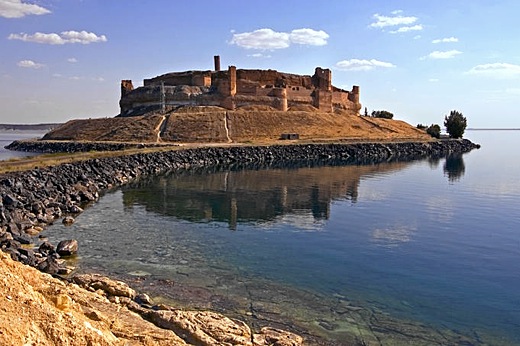
Image above: Qala'at Ja'abar jutting out into Lake al-Assad, central Syria. From (http://www.lonelyplanet.com/syria/images/lake-al-assad-syria$24062-22).
.
